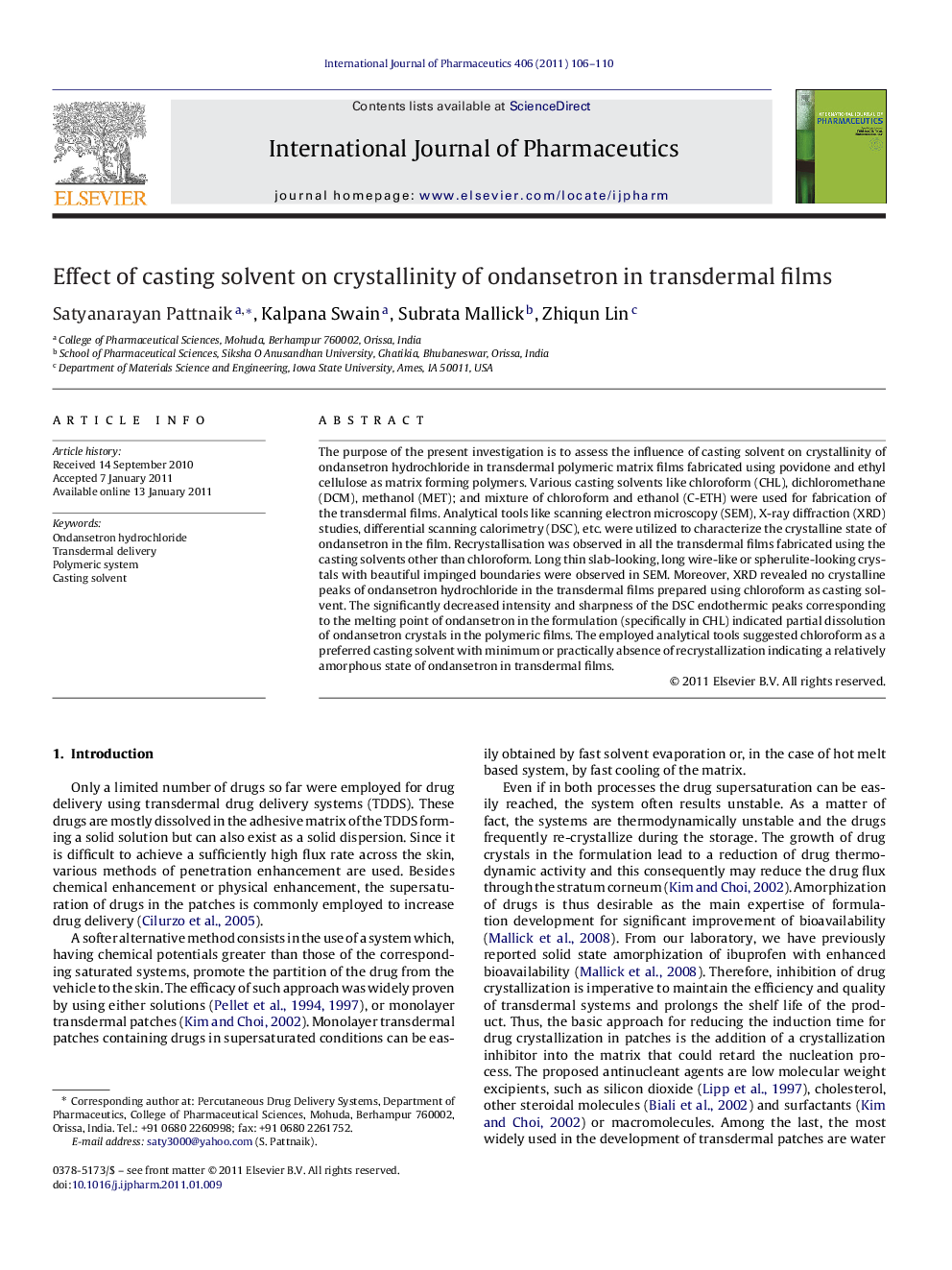| Article ID | Journal | Published Year | Pages | File Type |
|---|---|---|---|---|
| 2503735 | International Journal of Pharmaceutics | 2011 | 5 Pages |
The purpose of the present investigation is to assess the influence of casting solvent on crystallinity of ondansetron hydrochloride in transdermal polymeric matrix films fabricated using povidone and ethyl cellulose as matrix forming polymers. Various casting solvents like chloroform (CHL), dichloromethane (DCM), methanol (MET); and mixture of chloroform and ethanol (C-ETH) were used for fabrication of the transdermal films. Analytical tools like scanning electron microscopy (SEM), X-ray diffraction (XRD) studies, differential scanning calorimetry (DSC), etc. were utilized to characterize the crystalline state of ondansetron in the film. Recrystallisation was observed in all the transdermal films fabricated using the casting solvents other than chloroform. Long thin slab-looking, long wire-like or spherulite-looking crystals with beautiful impinged boundaries were observed in SEM. Moreover, XRD revealed no crystalline peaks of ondansetron hydrochloride in the transdermal films prepared using chloroform as casting solvent. The significantly decreased intensity and sharpness of the DSC endothermic peaks corresponding to the melting point of ondansetron in the formulation (specifically in CHL) indicated partial dissolution of ondansetron crystals in the polymeric films. The employed analytical tools suggested chloroform as a preferred casting solvent with minimum or practically absence of recrystallization indicating a relatively amorphous state of ondansetron in transdermal films.
Graphical abstractFigure optionsDownload full-size imageDownload as PowerPoint slide
